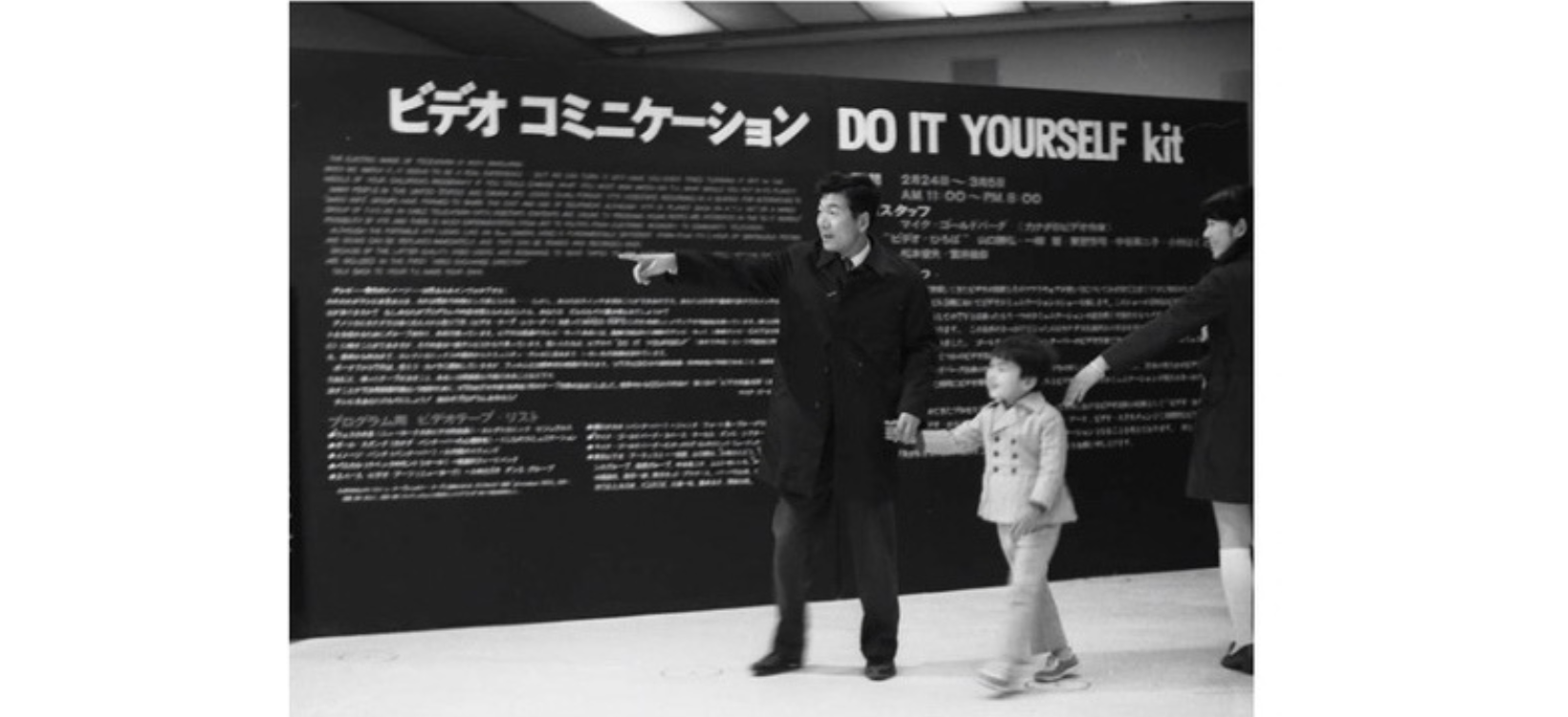
Video Hiroba
Video Hiroba
Video Hiroba was one of the first video collectives in Japan, formed on the occasion of the 1972 exhibition held in the Sony Building in Ginza entitled Video Communications: Do-It-Yourself Kit, where Canadian video artist Michael Goldberg helped introduce the new Sony Portapak. Organized chiefly by Fujiko Nakaya and Katsuhiro Yamaguchi, original members included Hakudō Kobayashi, Miyai Rikurō, Matsumoto Toshio, Ichiyanagi Toshi, and Yoshiaki Tōno. Nobuhiro Kawanaka, Sakumi Hagiwara, Seiichi Fujii, Hara Eizaburō, and Nakahara Michitaka had also participated in the first exhibition and were listed as members by the time of the group’s first self-published journal in September 1972. The group’s membership was fluid, with other artists, such as Michishita Kyōko and Morihiro Wada, joining later and some, notably Idemitsu Mako, participating in group exhibitions without officially joining the membership.
The group organized exhibitions including Video Week: Open Retina Grab Your Image in October 1972, a collaborative event with US practitioners including a workshop & symposium, and Tokyo-New York Video Express at the Tenjōsaijiki Hall in January 1974, which Shigeko Kubota helped to organize. Alongside their exhibitions, Video Hiroba held video workshops, published a journal entitled Video Express, and rented out their collectively-owned Sony Portapak cheaply to their own members. The group also produced work collectively, notably the 1973 project Study of Participation Methods for New and Current Residents in Urban Development Planning, which experimented with mediating the relationship between citizens and local bureaucrats in the urban redevelopment of central Yokohama via video as a communications technology ; and the Green Plaza PR Center project at Tōhoku Electric Power Company’s Niigata branch office.